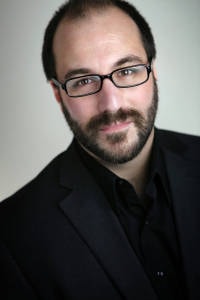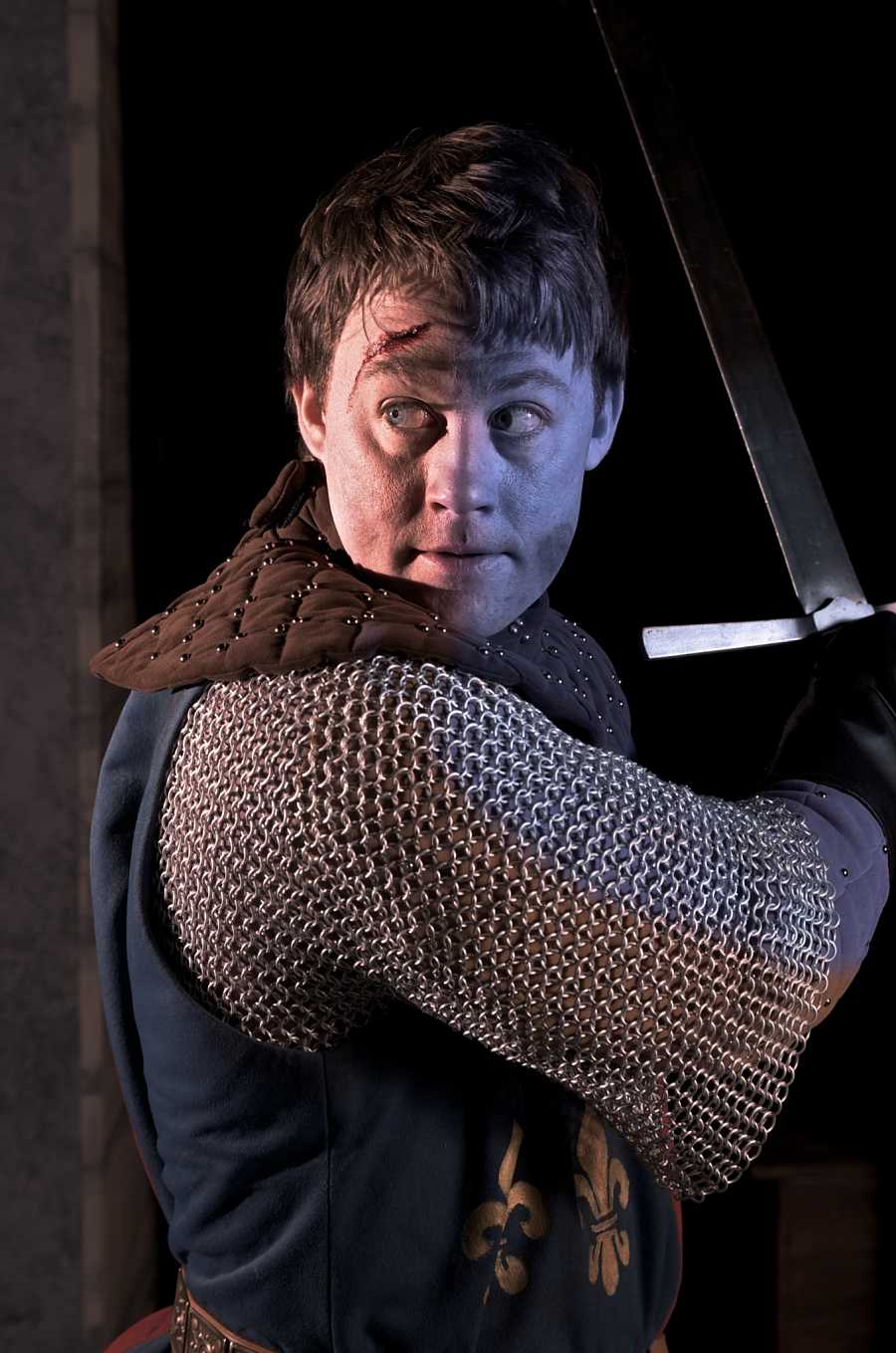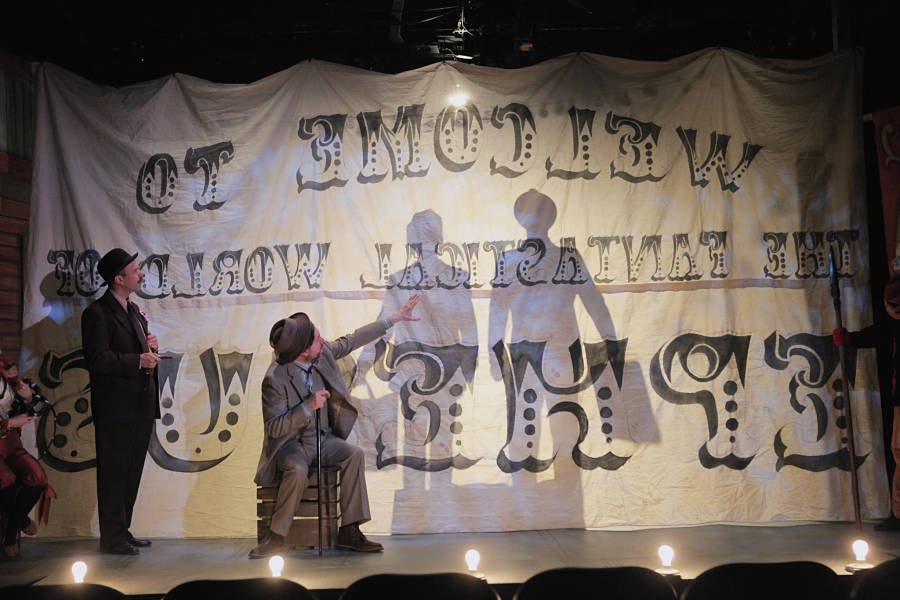CINCINNATI: Starting out as the Fahrenheit Theatre Company a little more than 20 years ago, the troupe now known as the Cincinnati Shakespeare Company recently completed the entire Shakespeare canon (with the 2014 production of The Two Noble Kinsmen) and is poised for another year of productions in both its downtown Queen City location and its annual park tour. We spoke with artistic director Brian Isaac Phillips, who inherited the company from artistic director Nick Rose (who in turn took the reins from founding a.d. Jasson Minidakis), about the company’s unique place in the Cincy scene, and its focus not only on the classics but on local hiring.
Who founded your theatre, when, and why?
In the early 1990s, a group of young actors came to Cincinnati and saw a need that they could fill: creating a classical company in this region. Through this endeavor, they were also able to create additional acting and theatrical opportunities for this city’s talented artists. This led to the birth of our resident ensemble model and the creation of our mission: to bring Shakespeare and the classics to life for audiences of all ages.

Tell us about yourself and your connection to your theatre.
I came to the organization as an actor in 1999. Then I spent a few years in the ensemble, and during a leadership transition, I spent a year as the associate artistic director before being named artistic director in 2003. I became producing artistic director in 2010.
What sets your theatre apart from others in your region?
Dedication to the classics. We’re dedicated to producing both Shakespeare and the classics, filling a niche in an area of the country whose residents may not have access to professionally staged classical works. Last May, with a production of The Two Noble Kinsmen, Cincinnati Shakespeare Company became one of the first five theatres in the country to “complete the canon,” having produced all of Shakespeare’s 38 plays. This was an enormous achievement not only for the company, but for the Cincinnati community, drawing patrons from across the country and as far away as Vancouver, B.C.
Also, the resident ensemble: CSC offers 15-20 actors long-term employment each season through its resident ensemble model. On average, a CSC ensemble member is employed for 30 weeks of work each season, three times the American regional theatre’s average contract length. One of only three union houses in Cincinnati, CSC writes more AEA contracts than any other theatre in the region, employing its union performers for more than 450 work-weeks each year. This has a significant ripple effect on the larger community since—in contrast with other regional theatres that “job in” actors from New York or Chicago on a show-by-show basis—CSC’s artists’ wages are channeled directly into the local economy (i.e., the actors pay the mortgage on their Cincinnati home rather than their New York apartment). In its 20-year existence, CSC has relocated more than 120 artists from all over the country (and the world) to Cincinnati, and 75 have “gone local,” becoming members of the community, contributing to the local economy, and building the cultural class of the city. Sixty-eight percent of the current ensemble members have been with the organization for five or more years.

Who is your audience?
As one of the only professional classical theatres between Chicago and Pittsburgh, CSC is committed to producing Shakespeare’s lesser known works in addition to his more popular titles. Consequently, CSC draws 25,000 patrons from a wide range of ZIP codes across the nation: 12 percent of mainstage patrons travel from outside the region to see CSC’s productions. And to better serve the schools of Greater Cincinnati, CSC annually produces plays in direct correspondence with school curriculum. As a result of this effort, and that of CSC’s ever-expanding education program, we attract an intergenerational audience—20 percent of patrons are under 18. The CSC education program reaches an additional 30,000 students and families, and nearly 10,000 community members attend CSC’s annual free Shakespeare in the Park tour, 90 percent of whom have never been to the downtown theatre.
Tell us about your favorite theatre institution other than your own, and why you admire it.
It is a tie between the National Theatre in London and the Stratford Festival in Ontario. At Stratford, I admire the acting company and their dedication to the classics, which has obviously been a significant inspiration to me and what I am hoping to do in Cincinnati. With the National Theatre, I am in awe of the breadth of work that is being produced. The programming for all of those stages is so diverse that in one visit you can see Shakespeare, a Greek play, a world premiere comedy and a cutting-edge drama in a new experimental space. Not to mention what they have touring and running on the West End. I am so passionate about the National Theatre that Cincinnati Shakespeare Company now sponsors broadcasts of their shows through NT Live to movie theatres in our area.
How do you pick the plays you put on your stage?
We are in the middle of that planning process right now. Being a Shakespeare company, we of course give priority to the Shakespeare productions we put on our stage, making sure that we are revisiting titles that are popular and introducing our audiences to new ones. We also have a commitment in our mission to the classics, so we are always balancing the Shakespeare with contemporary classics and literary adaptions that complement the Shakespeare in the playbill, inspire our artists and reflect the matters of the day.
What’s your annual budget, and how many artists do you employ each season?
Our annual budget is just under $1.5 million. This season CSC will employ 46 artists: a company of 27 professional actors and stage managers (including 17 members of Actor’s Equity), 14 professional directors, designers, and technicians, and six arts administration professionals.

What show are you working on now? Anything else in your season that you’re especially looking forward to?
I am currently in early preproduction for Henry V, opening in May 2015. This is part of a multi-year chronological history cycle that began 3 years ago. It is especially exciting because we are able to leverage our resident ensemble and have key actors reprise their roles through the cycle. This is also the production in which we have been awarded a grant from the National Endowment for the Arts’ Shakespeare in American Communities initiative (managed by Arts Midwest). After that, I am extremely excited about presenting the regional premiere of One Man, Two Guvnors by Richard Bean.
Strangest or funniest thing you’ve ever seen (or put) on your stage?
We are currently presenting a production of The Comedy of Errors. The last time we did that show was in 2009, and it had a sci-fi, B-movie spin that we got to be very creative about. We even included a mutant human duck that mated with a gorilla and laid an egg onstage! I am not sure if it was successful, but it certainly was the strangest (and funniest) thing we’ve even put on our stage!
What are you doing when you’re not doing theatre?
I have 2 children, ages 3 and 6, so that keeps my wife and I pretty busy.
What does theatre—not just your theatre, but the American or world theatre—look like in, say, 20 years?
I think that audiences are craving more intimate and personal experiences in the way that they consume theatre. It will no longer be just about us putting something onstage that the audience simply watches from afar. They want to join the dialogue and co-create, curate, comment and construct with us. And Shakespeare is uniquely positioned because the stories are universal. Having stood the test of time already, we can absolutely guarantee that Shakespeare will still be around in 20 years and that companies (including ours) will be continuing to innovate on the ways that we engage with our audiences.


